Introduction – Albatrosses
Albatrosses are a group of large seabirds belonging to the family Diomedeidae. They are renowned for their impressive size, with some species having the largest wingspan of any bird. Albatrosses are primarily found in the Southern Ocean and the North Pacific Ocean, where they spend the majority of their lives soaring over the open seas.

Overview of their characteristics and significance
Here below are some of the key characteristics of Albatrosses.
1. Impressive size: Albatrosses are among the largest birds, with wingspans ranging from 6 to 12 feet (1.8 to 3.7 meters). This size allows them to effortlessly glide for long distances without flapping their wings.
2. Adaptations for flight: Albatrosses have long, narrow wings that enable them to ride air currents and cover vast distances. They are highly efficient flyers and can travel thousands of miles without rest.
3. Plumage and coloration: Albatrosses exhibit a range of plumage patterns and colorations, including white, black, and grey feathers. Some species have distinct markings on their heads or wings, aiding in identification.
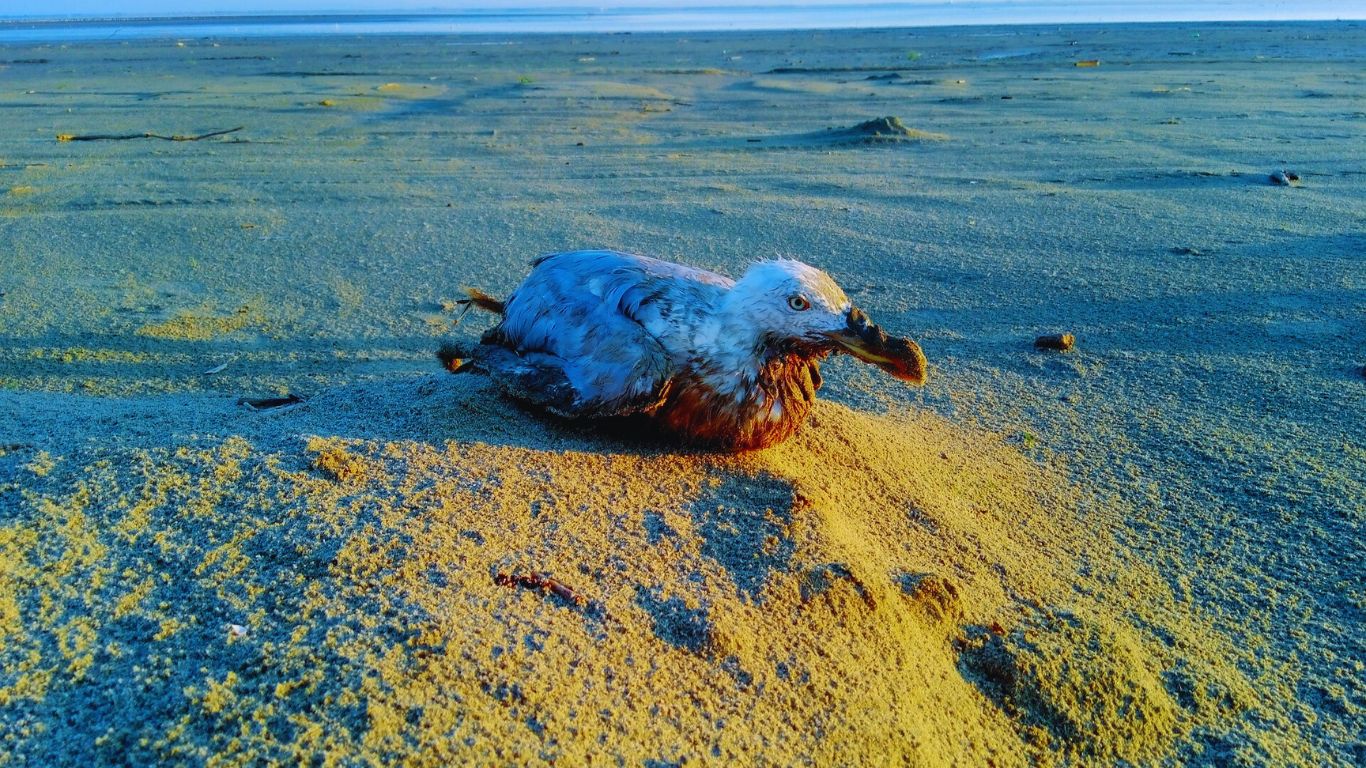
4. Longevity: Albatrosses are known for their long lifespans, with some individuals living over 50 years. This longevity is exceptional among birds and contributes to their significance in ecological studies.
5. Ecological role: Albatrosses play a vital role in marine ecosystems as top predators. They help control populations of fish and squid, and their excrement provides nutrients to oceanic regions.
6. Cultural significance: Albatrosses have captured the imagination of humans for centuries and hold cultural significance in various societies. They have been featured in literature, art, and folklore, symbolizing freedom, endurance, and navigation.
Classification of Albatrosses within the order Procellariiformes
Albatrosses belong to the order Procellariiformes, which also includes other seabird families such as petrels and shearwaters. Within the Procellariiformes order, albatrosses are classified in the family Diomedeidae. There are 22 recognized species of albatrosses, divided into four genera: Diomedea, Thalassarche, Phoebastria, and Phoebetria.
B. Geographic distribution of albatross species
Albatrosses have a widespread distribution across the Southern Ocean and the North Pacific Ocean. Their breeding colonies are primarily found on remote islands and archipelagos, often located in subantarctic or tropical regions.
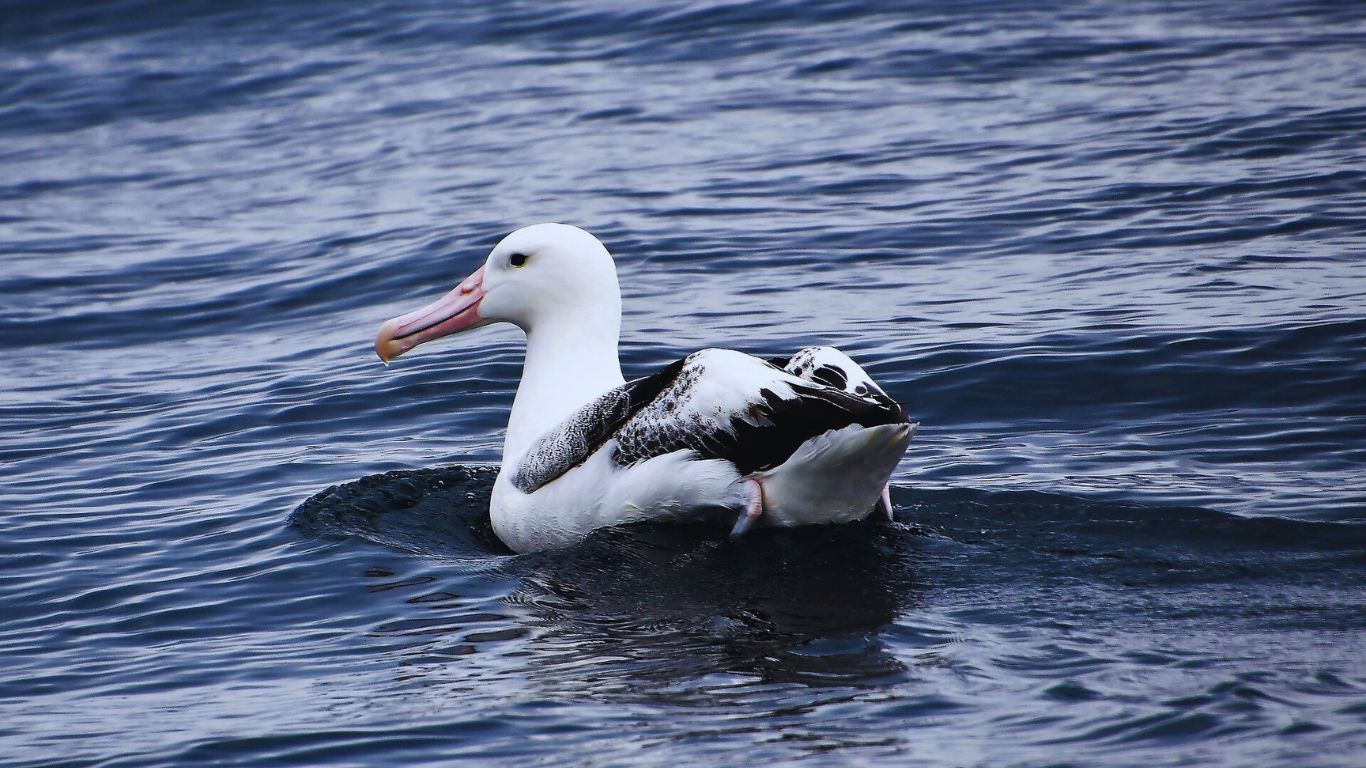
Some of the key locations where albatross colonies can be found include:
1. Southern Ocean:
a. South Georgia and the South Sandwich Islands
b. Falkland Islands (Malvinas)
c. Macquarie Island
d. Kerguelen Islands
2. North Pacific Ocean:
a. Midway Atoll
b. Hawaiian Islands
c. Bonin Islands (Ogasawara Islands)
d. Galapagos Islands
It is important to note that not all albatross species inhabit the same regions. Some species are more restricted in their distribution, while others have a broader range. For instance, the Wandering Albatross (Diomedea exulans) is known to cover vast distances across the Southern Ocean, while the Laysan Albatross (Phoebastria immutabilis) is primarily found in the North Pacific Ocean.
The distribution of albatrosses is also influenced by seasonal variations and their migration patterns, as they travel long distances in search of food and suitable breeding sites.
Physical Features
Albatrosses possess other anatomical features that contribute to their flight abilities, such as strong chest muscles for flapping and a unique tubular-nosed structure that aids in reducing drag during flight.
Albatrosses exhibit considerable variation in size and weight among different species. The largest albatross species is the Wandering Albatross (Diomedea exulans), which has a wingspan reaching up to 11 feet (3.4 meters) and can weigh around 20 pounds (9 kilograms). On the other hand, the smaller species, such as the Black-browed Albatross (Thalassarche melanophris), have a wingspan of around 6.5 feet (2 meters) and weigh approximately 7-9 pounds (3-4 kilograms).
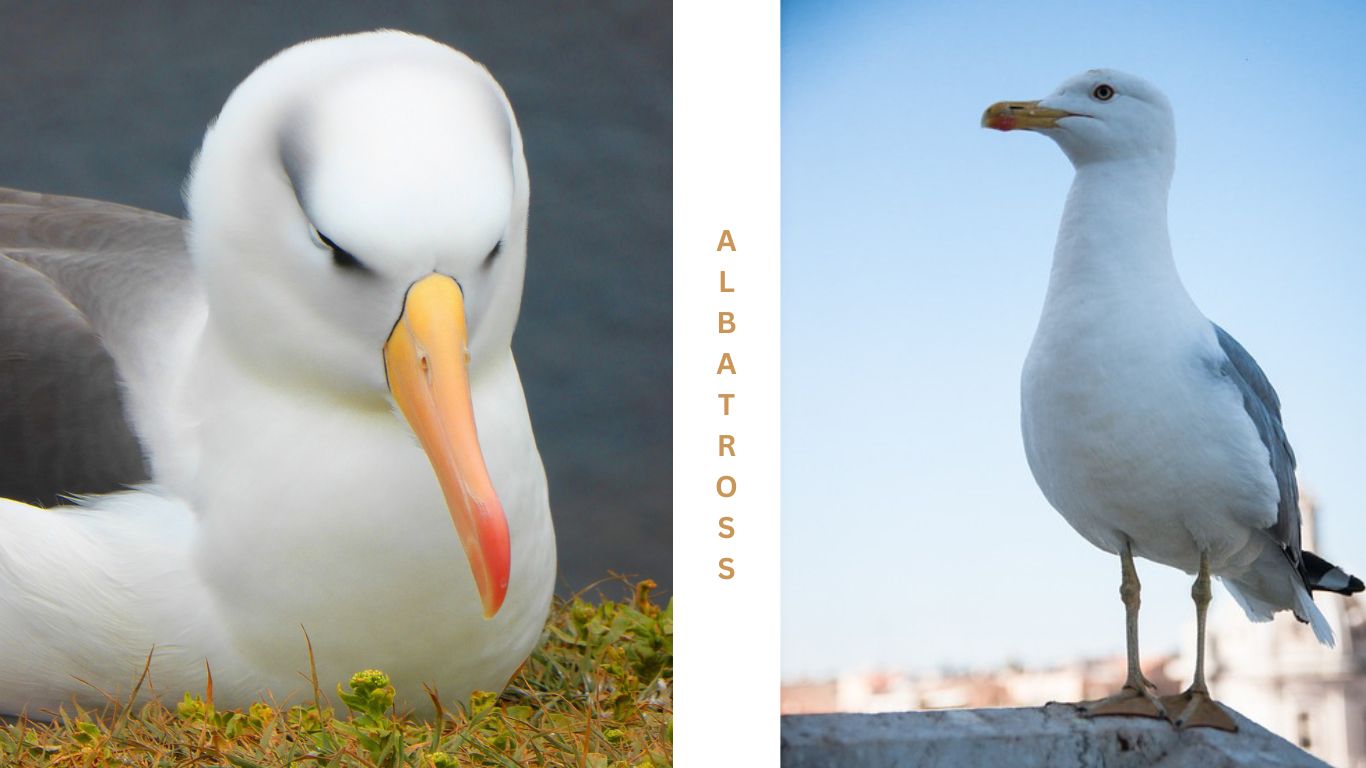
Albatrosses are renowned for their impressive wingspan, which allows them to effortlessly glide over vast distances. Their wings are long and narrow, well-suited for soaring and staying aloft for extended periods. The wingspan of albatrosses can range from 6 to 12 feet (1.8 to 3.7 meters), depending on the species. This wide wingspan-to-body ratio enables them to take advantage of air currents and minimize energy expenditure during flight.
Albatrosses display a variety of plumage patterns and colorations. Most species have predominantly white feathers on their bodies, often with contrasting dark-colored wings and backs. Some species, like the Wandering Albatross, have distinctive markings on their heads, including dark eye patches and yellow bills. Additionally, some albatrosses undergo changes in plumage as they mature, with juveniles having different coloration compared to adults.
Life Cycle and Reproduction
Albatrosses are known for their long-term monogamous relationships. They typically form lifelong pair bonds, with both male and female partners participating in courtship rituals. These rituals often involve elaborate displays, such as bill-clapping, sky-pointing, and dance-like movements. The pair bond is strengthened through mutual preening and vocalizations.
Albatrosses are colonial breeders, nesting in large colonies on remote islands and coastal cliffs. They often return to the same breeding site year after year. Albatrosses construct simple nests on the ground or in vegetation, using grass, mud, or pebbles. Some species, like the Wandering Albatross, build large, elevated nests called “mounds.”
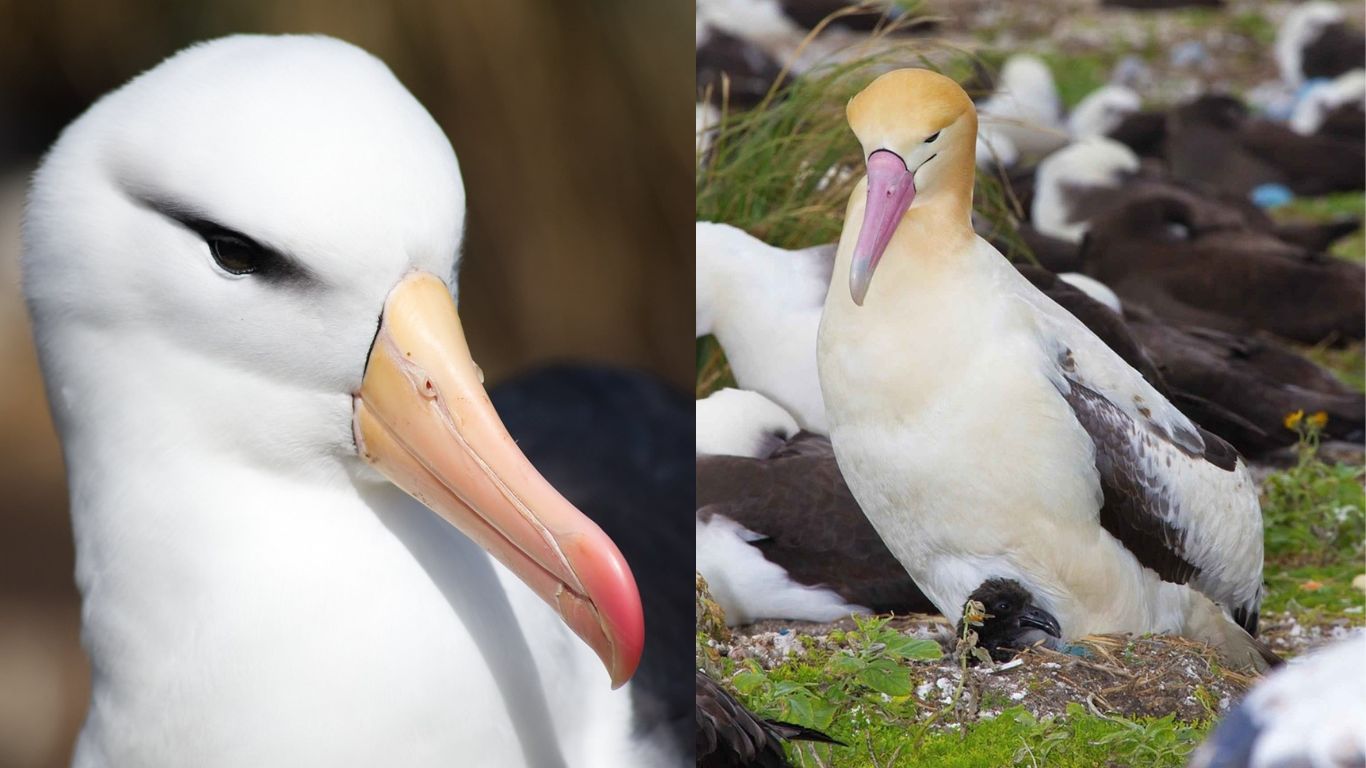
Albatrosses typically lay a single egg per breeding season. The eggs are large and white. Both parents take turns incubating the egg, with shifts lasting several days to weeks. The incubation period can vary depending on the species but generally lasts around 65 to 80 days. After hatching, the parents take turns feeding and caring for the chick, regurgitating stomach oil and food to nourish it. The chicks grow slowly and take several months to fledge.
Feeding Habits
Albatrosses are primarily marine carnivores, feeding on a diet composed mainly of fish, squid, and other marine organisms. The specific composition of their diet varies among species and is influenced by factors such as geographic location and food availability. They are skilled predators, using their sharp beaks to snatch prey from the ocean surface or by plunge-diving into the water.
Albatrosses are adapted for long-distance foraging over the open ocean. Their large wings and efficient flight allow them to cover extensive distances in search of food. They have a keen sense of smell, which helps them locate prey, particularly in the case of squid. Albatrosses can also travel significant distances from their breeding colonies to find productive foraging grounds.
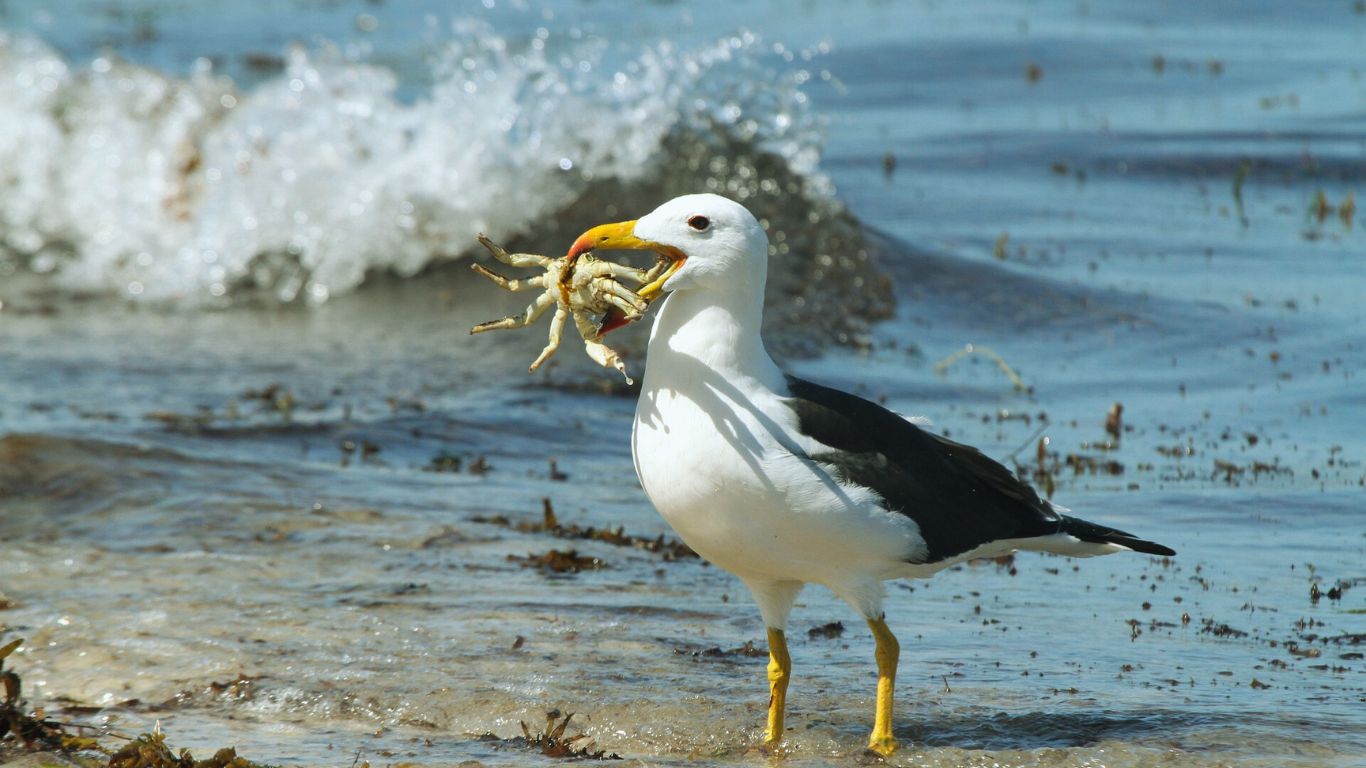
Albatrosses have an interesting ecological relationship with other marine organisms, particularly with certain species of fish and cetaceans. They often follow fishing boats and cetaceans, taking advantage of the opportunities to scavenge on discarded fish or to feed on prey stirred up by the movements of these animals. Albatrosses may also associate with other seabirds, such as petrels and shearwaters, forming foraging aggregations.
Albatrosses’ foraging habits make them important indicators of the health and abundance of marine ecosystems, as changes in their food availability or interactions with fishing activities can impact their survival and population dynamics.
Conservation Status and Threats
Albatrosses face various conservation challenges, leading to their vulnerable status. Some of the key concerns include habitat degradation, climate change, pollution, bycatch in fisheries, and invasive species. These factors contribute to population declines and pose a threat to the long-term survival of albatross species.
A. Human impact, including fishing interactions and habitat degradation
1. Bycatch in fisheries: Albatrosses are susceptible to accidental capture in fishing gear, particularly in longline and trawl fisheries. They can become entangled or hooked while diving for prey, leading to injuries or death.
2. Habitat degradation: Destruction of nesting sites due to human activities, such as coastal development and invasive species introduction, disrupts albatross breeding colonies and reduces breeding success.
3. Pollution: Pollution from marine debris, oil spills, and plastic ingestion poses significant threats to albatross populations. Ingestion of plastics can lead to blockages in their digestive system or release of toxic chemicals.
4. Climate change: Albatrosses are impacted by climate change through altered oceanic conditions, including changes in sea surface temperatures and food availability. These changes can affect their foraging success and overall reproductive success.
B. Conservation efforts and measures
Conservation initiatives are crucial for protecting albatross populations and mitigating threats. Key conservation measures include:
1. Protected areas: Establishing and effectively managing marine protected areas in key foraging and breeding areas to safeguard albatross habitats.
2. Mitigating bycatch: Implementing measures such as using bird-scaring lines, weighted longline systems, and setting fishing gear at night to reduce albatross interactions with fishing activities.
3. Invasive species control: Implementing eradication and control programs to remove introduced predators, such as rats and cats, from breeding islands.
4. Public awareness and education: Promoting awareness about albatross conservation, sustainable fishing practices, and the importance of reducing plastic pollution.
5. International cooperation: Encouraging international collaboration and agreements to protect albatrosses across their migratory range.
Efforts are being made by governments, conservation organizations, researchers, and local communities to conserve albatross populations and ensure their long-term survival.
Cultural Significance and Symbolism
Albatrosses have captivated human imagination throughout history and hold cultural significance in various societies. They have been observed and referenced by seafarers, explorers, and indigenous communities in different parts of the world. The encounters with these majestic birds have often been seen as significant events during long sea voyages.
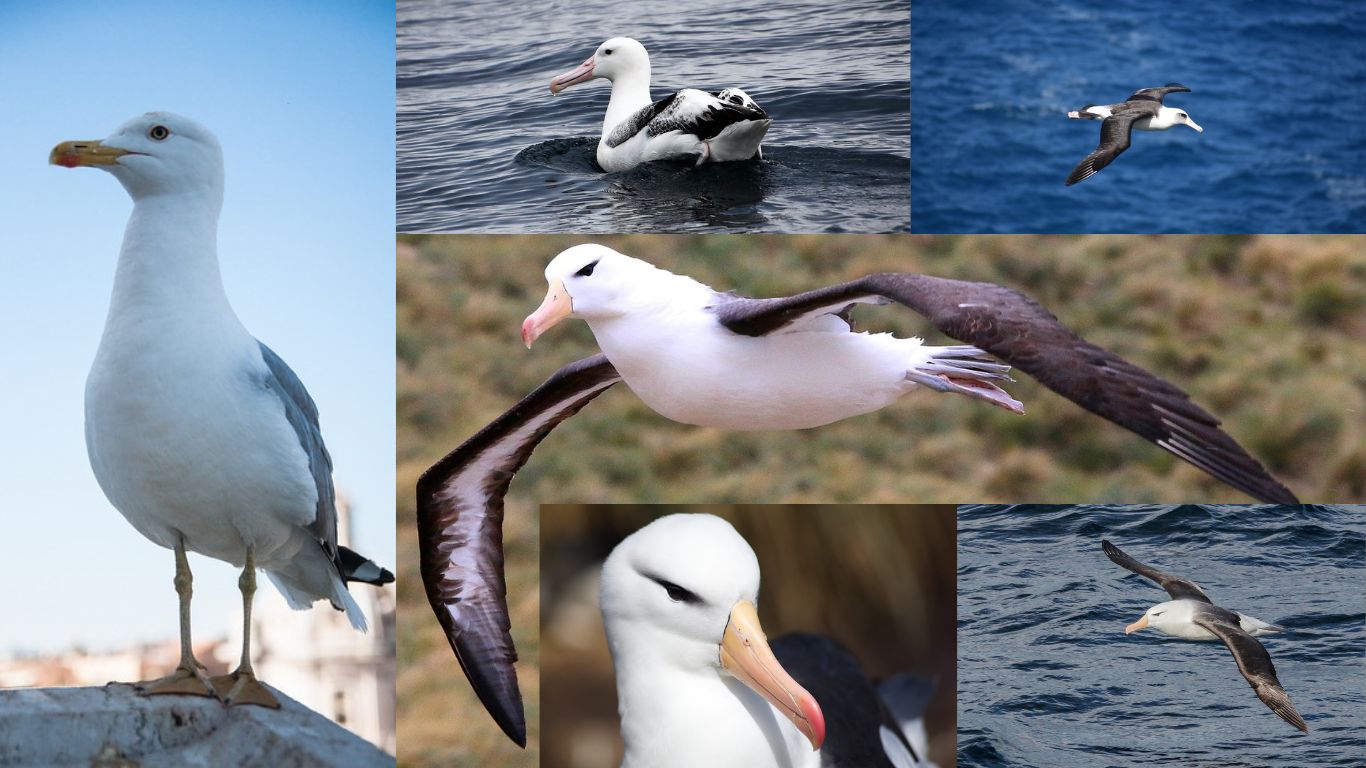
A. Literary references, such as Samuel Taylor Coleridge’s “The Rime of the Ancient Mariner”
Albatrosses have been prominently featured in literature and poetry, with one of the most famous examples being Samuel Taylor Coleridge’s poem “The Rime of the Ancient Mariner.” In the poem, the albatross is a central symbol representing both good fortune and the burden of guilt.
B. Symbolism and representations in various cultures
1. Symbol of freedom and endurance: Albatrosses, with their ability to soar across vast distances over the open ocean, are often seen as symbols of freedom, independence, and resilience.
2. Navigational significance: In maritime cultures, albatrosses are associated with navigation and safe passage. They are considered to be guiding spirits or omens for sailors.
3. Wisdom and spiritual symbolism: Albatrosses are sometimes associated with wisdom and insight due to their longevity and their ability to navigate vast distances. They are revered as spiritual or totemic animals in certain cultures.
Albatrosses’ cultural significance and symbolism highlight the deep connection between humans and the natural world, reflecting our admiration for their grace, beauty, and remarkable abilities.
Research and Scientific Contributions
Albatrosses play a vital role in ecological studies as they occupy the top of the marine food chain. Monitoring their populations, foraging behaviors, and reproductive success provides valuable insights into the health of marine ecosystems and the availability of prey species.
A. Tracking and migration studies
Scientists have used tracking technologies, such as satellite transmitters and GPS loggers, to study the migration patterns, foraging behavior, and movements of albatrosses. These studies have revealed their extensive foraging ranges, migratory routes, and the critical areas they rely on throughout the year.
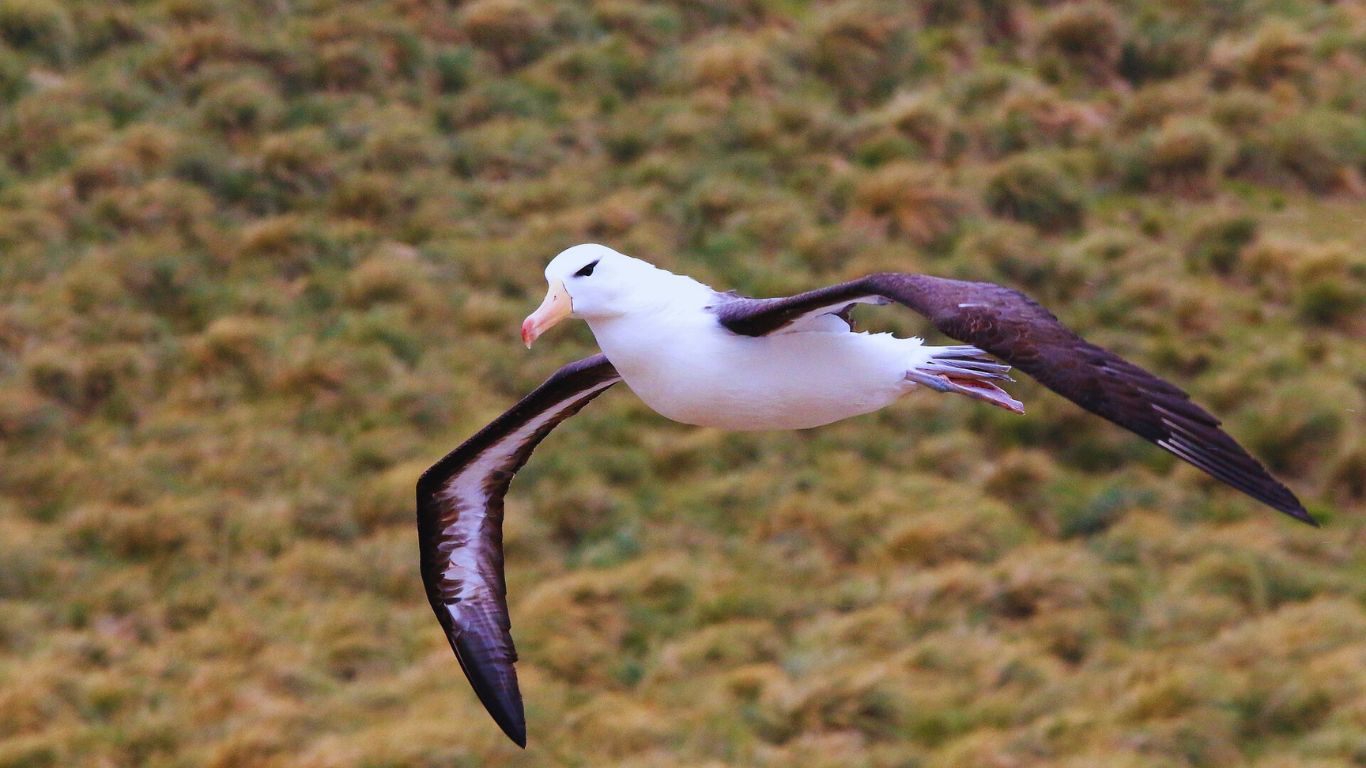
B. Conservation genetics and population studies
Genetic research has contributed to our understanding of albatross populations, including their genetic diversity, population structure, and relatedness among individuals. These studies aid in developing effective conservation strategies and identifying priority areas for protection.
C. Climate change and oceanic research
Albatrosses are being studied in the context of climate change to assess the impacts of changing oceanic conditions on their distribution, breeding success, and foraging patterns. Their long-term monitoring provides valuable data for understanding the effects of climate change on marine ecosystems.
D. Threat assessment and conservation planning
.Scientific research on albatrosses has helped identify and assess the major threats they face, such as bycatch in fisheries and habitat degradation. This information is crucial for developing conservation plans, implementing mitigation measures, and advocating for policy changes to protect these birds.
Albatrosses serve as flagship species for marine conservation efforts, and the scientific research conducted on them contributes to our broader understanding of marine ecology, conservation biology, and the impacts of human activities on the natural world.
Conclusion
Recap of key points
1. Albatrosses belong to the order Procellariiformes and are classified in the family Diomedeidae. There are 22 recognized species divided into four genera.
2. Albatrosses have a widespread distribution across the Southern Ocean and the North Pacific Ocean, with breeding colonies found on remote islands and archipelagos.
3. They exhibit variations in size, wingspan, plumage, and coloration among different species. Their unique adaptations enable them to soar over long distances and forage efficiently.
4. Albatrosses have a complex life cycle, with lifelong pair bonds, colonial nesting habits, and parental care.
5. Their diet consists mainly of fish and squid, and they have adaptations for long-distance oceanic foraging.
6. Albatrosses face numerous threats, including bycatch in fisheries, habitat degradation, pollution, and climate change.
7. Conservation efforts involve measures such as protected areas, mitigating bycatch, invasive species control, and public awareness.
8. Albatrosses hold cultural significance and are often associated with freedom, endurance, and wisdom. They have been featured in literature and are revered in various cultures.
9. Scientific research on albatrosses contributes to ecological studies, tracking and migration studies, conservation genetics, climate change research, and threat assessment.
Protecting albatross populations is essential for maintaining the health of marine ecosystems and preserving their cultural and ecological significance. Conservation efforts should focus on mitigating threats, implementing sustainable fishing practices, reducing pollution, and preserving key breeding and foraging habitats.
Albatrosses exemplify the marvels of the natural world, and safeguarding these magnificent birds ensures the preservation of their beauty, ecological role, and cultural legacy for generations to come.
